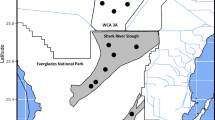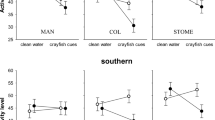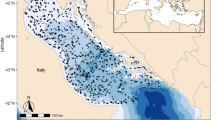This denizen of tropical swamps may shed light on how ancient fish were able to survive out of water.
Abstract
An important step towards understanding the evolution of terrestriality in vertebrates is to identify how the aquatic ancestors of tetrapods were able to access ground-based prey. We have discovered that the ‘eel catfish’ Channallabes apus, an inhabitant of the muddy swamps of tropical Africa, has a remarkable ability to forage and capture prey on land. The animal's capacity to bend its head down towards the ground while feeding seems to be an essential feature that may have enabled fish to make the transition from an aquatic to a terrestrial mode.
This is a preview of subscription content, access via your institution
Access options
Subscribe to this journal
Receive 51 print issues and online access
$199.00 per year
only $3.90 per issue
Buy this article
- Purchase on SpringerLink
- Instant access to full article PDF
Prices may be subject to local taxes which are calculated during checkout

Similar content being viewed by others
References
Ahlberg, P. E. & Milner, R. Nature 368, 507–514 (1994).
Bramble, D. M. & Wake, D. B. in Functional Vertebrate Morphology (eds Hildebrand, M. et al.) 230–261 (Belknap, Cambridge, Massachusetts, 1985).
Lauder, G. V. J. Morphol. 163, 283–317 (1985).
Summers, A. P. et al. J. Exp. Zool. 281, 280–287 (1998).
Huysentruyt, F. et al. Belg. J. Zool. 134, 25–30 (2004).
Sponder, D. L. & Lauder, G. V. J. Zool., Lond. 193, 517–530 (1981).
Van Wassenbergh, S. et al. J. Exp. Biol. 208, 4627–4638 (2005).
Daeschler, E. B., Shubin, N. H. & Jenkins, F. A. Jr Nature 757–763 (2006).
Ahlberg, P. E. et al. Nature 437, 137–140 (2005).
Author information
Authors and Affiliations
Corresponding author
Supplementary information
Supplementary information
(PDF 71 kb)
Supplementary movie
The eel catfish, Channallabes apus, can propel itself from the water to capture prey. (MPG 1484 kb)
Supplementary movie
This high speed video shows an eel catfish eating a morsel of cod on land. (MPG 1544 kb)
Supplementary movie
The swallowing motion of the eel catfish. (MPG 728 kb)
Rights and permissions
About this article
Cite this article
Van Wassenbergh, S., Herrel, A., Adriaens, D. et al. A catfish that can strike its prey on land. Nature 440, 881 (2006). https://doi.org/10.1038/440881a
Published:
Issue date:
DOI: https://doi.org/10.1038/440881a
This article is cited by
-
Fish uses 'water tongue' to grab prey on land
Nature (2015)
-
Flexibility is everything: prey capture throughout the seasonal habitat switches in the smooth newt Lissotriton vulgaris
Organisms Diversity & Evolution (2015)
-
The fish that hunts on land
Nature (2006)



